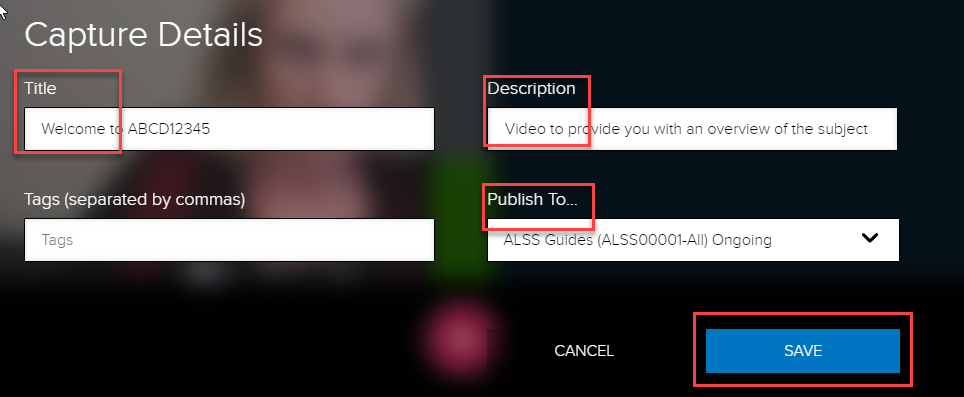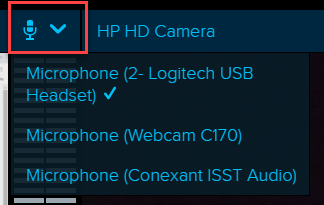Record and edit a 'digital whiteboard' video using Microsoft Surface
Digital whiteboard, digital blackboard, digital annotations or 'Khan Academy' style videos are a common genre of educational video, particularly in STEM subjects that rely on a lot of long-form problem solving using formulae. They can be quick to plan and record, but more difficult to edit after the recording is over. They are also difficult for students to access, so we recommend making properly type-set versions of your handwritten visuals available to download for students who may have difficulty reading handwriting or may be viewing on a smaller mobile screen.
Hardware
Whether you’re planning a series of audio podcasts or just want to record a quick video message with your webcam, it always pays to record a quick sound test. to test the quality of your microphone. See how to find a good microphone on video and audio - recording, editing and uploading.
You will also need a tablet device that can run Echo Universal Capture, and a compatible stylus. For this demonstration, we will be using a Microsoft Surface tablet computer with matching Microsoft Surface Pen, running PowerPoint.
Software
The key to recording a good digital whiteboard video is familiarity with your device and annotation software. For annotating slides, Microsoft PowerPoint and Apple Keynote both offer support for onscreen annotation. For PDFs, many people have recommended Drawboard.
If you just want to annotate on a blank piece of 'digital paper', simply open a PowerPoint Presentation full of empty slides. If you want to scaffold your illustrations or annotate over the top, you can create partial slides with spaces for annotations, or add illustrations that you can highlight over the top of.
We recommend using slides in 16x9 (widescreen) format for your slides, and we encourage you to use high quality photos and illustrations that are cited according to the University's copyright guidelines. You can download a 16x9 University slide template from the University's Brand Hub website - select 'PowerPoint presentation with copyright notice for teaching purposes, 16x9 version'.
For recording and editing video there is a variety of software options available. In this step-by-step guide we are using Echo360 Universal Capture (previously known as Personal Capture) as it can be accessed through Canvas and will be familiar to many users. It is available to all staff by logging into Lecture Capture itself or the self service portal for Macs or Software Centre for Windows.
Students can also download audio or video files through the Echo360 app and access them offline, thus reducing disruptions due to bandwidth and latency issues.
Step-by-step guide
- Find a quiet place to record.
- Plug in your choice of microphone.
- If you haven’t already, install Universal Capture on your computer
- Open the Echo360 Universal Capture app and log in with your University of Melbourne account.
- Click the pen icon next to the text on the top bar

- Enter a Title and a Description for your video message.
- Under Publish To… select the subject you wish to publish the video file too. Alternatively you can Publish to your Echo360 Library and share it to your subject later.
- Click Save

- Click the dropdown menu next to the Microphone icon and make sure your USB microphone is selected.

- Ensure your WebCam is switched off and the Screen Capture option is switched on using the drop-down menu on either side of the audio levels meter (the green bars in the middle of the screen)

- Before you click Record, speak into the microphone and check the audio levels (the green bars in the middle of the screen) are bouncing up and down and peaking around the 75% mark. If your mic is too loud or too quiet, you can either adjust the distance between the mic and your mouth, or adjust the microphone audio levels on your computer operating system (instructions for Mac and PC).
- Next, open your PowerPoint presentation in full screen mode. If you have two monitors, you may need to open PowerPoint > Preferences > Slideshow and deselect ' Always start Presenter view with two displays' to make the slides appear full screen on your desktop.
- Go back to Echo and click the large red Recording button to start the recording, then minimise the Echo app and start your presentation.

- The annotation tool in PowerPoint can be accessed by hovering your pen over the bottom-left corner of the screen. You can select Laser Pointer for onscreen callouts, Pen for writing onto a blank slide, Highlighter for adding emphasis to a slide, and Eraser to erase your annotations.

- You can pause, complete or cancel the recording at any time by reopening Echo from the taskbar and using the buttons on screen. Click the square stop button when you’ve finished recording your video message.

- When the upload is complete, click on Click to View to follow the link to view the video recording on the Echo website. If you have any difficulties you can log onto Lecture Capture and locate your upload either in My Content, then click on it.
- To make a quick and simple edits, select Edit media and follow the onscreen instructions to trim, top, tail or delete the unwanted section of media.
- If you want to make more extensive edits, consider downloading the media from Echo and working on it on the desktop using a free editor like OpenShot then reupload the video to Echo.
- To share your video file with your subject you have the below options:
- If you selected to Publish your video file straight to your subject, it will already be available to students in your Lecture Capture link.
- If you uploaded the video file to your Library you can use the Share button to share it to the Lecture Capture link in your subject by clicking on Class and selecting the Subject you wish to share the video too.
- If you wish to embed the video on a Canvas Page or in an Announcement, click on Share and then Links, Copy the embed code and then add to your Page or Announcement by using the Upload/Record Media, clicking on Embed and pasting the code in the box.
The video recording will automatically begin uploading to Echo.
Supporting resources
For recommended hardware and software, see video and audio - recording, editing and uploading.
See the Learning Environments web page on advice for online and flexible learning for detailed information and supporting resources.
- Lecture recordings and videos
- Difficulties with YouTube and Vimeo
- Self-recording videos and podcasts
- Transferring content from third-party tools to the LMS.
This guide was last updated 22 Nov 2023.
Please report any errors or omissions in this guide by submitting an LMS support request.